Oh my giddy Santa (almost an anagram of aunt), Christmas Day is roaring down the pike. Only five days of rising panic to go! Eeek.
I suspect the nerves are more about the fear of letting people’s expectations down than about the actual event. After all, shoving a turkey in the oven and spending the lengthy time it takes to roast preparing vegetables is not much more of an event than any Sunday lunch. And you’re surrounded by (jostled by) more willing sous chefs than you have assignments for. Even the Christmas pudding was made months ago.
Yet here we are, labouring in advance, knocking off jobs we’re convinced that, by tackling them now, will make life easier then. The presents wrapped, we’re softening butter and beating in brandy - the main reason people hold their plates out for a slice of a dense dried-fruits cannonball that has been set on fire. (Try explaining this delicacy to an alien from outer space. Or even another continent.) We’re freezing our mince pie pastry and our pre-made gravy. We’re drying out loaves to make crumbs for the bread sauce, stewing the cranberries, counting out the carrots - should we peel them ahead? No! How about the potatoes - should we par boil them ahead then freeze them like we’ve heard Heston Blumenthal does with his triple-cooked fries? Absolutely not! What about the brussels sprouts - can we de-leaf them today? Nooo!
Do you have the fixings for a Negroni? Pour yourself one right now.
Nevertheless, it is indisputably a good idea to have an emergency dessert up your sleeve. There are, after all, twelve days of Christmas. I offer you two, the one forming part of the second: meringues and Mont Blanc. A slightly unorthodox version of the latter takes but a few minutes to make into one of the most luxurious desserts ever.
If you’re up for baking meringues (ahead then stored in an airtight tin), you can create not only the correct base for Mont Blanc, but the makings of an impressive festive pudding that seduces even those who don’t eat dessert.
There’s as much tosh written about meringues and their unachievability as there is about souffles. Perhaps because both involve egg whites - those innocent elements of fluff that seem to reduce the doughtiest of cooks to a jelly of fear.
I’ll give you the method first so you can see just how simple it is: Preheat oven to 140C/275F. Whip egg whites to a soft peak. Spoonful by spoonful, whisk in sugar.
Spoon the meringue in mounds of the final size you want (individuals for sandwiching together with cream, small Mont Blanc nests or one large base) onto a greased and floured baking sheet, and slide into a hot oven. Leave the door firmly closed until they’ve turned the colour of a pale latte and are ready to take out, about 1 hour 30-45 minutes for a Mont Blanc base, 45-60 minutes for individual meringues or nests. (Check them for pale colour.) That’s it.
For meringues for 4: 4 egg whites, pinch of salt, 225g/7oz caster sugar.
Chestnuts as a sweet pudding have a long history, in the regions where the trees grow. Libro de arte conquinaria, a manuscript from around 1460-1480, contains a recipe for a cooked chestnut purée blended with cheeses, eggs, fats, spices and sugar, piled into a pastry case. That recipe is reprinted in 1475 by Barlolomeo Platina in one of the earliest of cookbooks, De honesta voluptate et valetudine. Another Bartolomeo, Scappi this time, includes it in his 1570 cookbook, Opera dell’arte del cucinare. An English cookbook of 1747, The Art of Cookery Made Plain and Easy, also prints it, plagiarism clearly not a problem back then.
But it’s a baker in Chamonix, France, who claims to have invented Mont Blanc, in 1620, plausible if you consider that the mountain he named it for soars right above the town, as it does above this Tabled.
Urbain Dubois, the French chef responsible for the title ‘chef’ and who wrote a series of recipe books that have become classics of French cuisine, named the confection in 1871 purée de marrons à la crème - ‘chestnut purée with cream’.
The modern version is a mound of chestnut purée piped onto a meringue base or into individual meringue nests. However, you need to take some of the Christmas pressure off. So on this occasion, unless you’re making the meringue recipe above, I’d buy ready-made meringues or nests. Either plate up as many individual ones as you need for filling with the purée, or make one large base by breaking the meringues into large pieces or carving off their peaks half way down each meringue with a serrated knife, laying them to cover a single china pie plate and using segments to fill in any gaps.
Serves 8-10
If you’re not feeding many, left-over purée can be turned into marron glacé-flavoured ice cream. Just beat it into a carton of softened good quality vanilla ice cream and refreeze.
450g/1lbs vacuum-packed chestnuts (or can of sweetened Clement Faugier Chestnut Puree and no other ingredient - read on)
1 vanilla bean
¾ cup water
⅓ cup sugar
Put the chestnuts in a pan with the remaining ingredients. Cover and simmer for 30 minutes until they are very soft. Wash the vanilla bean and dry for use another time. Blitz everything else into a purée in a blender or processor. Thin it, if necessary, with little water, spoon by spoon. (I added a glug of Spiced Rum…) Push the purée in batches through a potato ricer and hold it above the meringues to let the worms of purée tumble onto the meringue base, guiding the ricer to form a mountain shape. Equally, you can use a piping bag and pipe it over the base. (Of course, if I’m supposed to be simplifying your life, just buy a can of sweetened Clement Faugier Chestnut Puree, thin it a little with water or apple juice and carry on…)
For the whipped cream
355ml/1½ cups double/heavy whipping cream
1 teaspoon vanilla extract
2 squares grated bitter chocolate, for decoration (optional)
Stiffly whip the cream with the vanilla extract into soft peaks that you can scrape onto the chestnut mountain to turn it into Mont Blanc. If you like, you can grate 2 squares of bitter chocolate over the top to decorate it.
Should you prefer the authenticity that comes with hard work, Nigella has a good recipe in How to be a Domestic Goddess. But my method takes that mantel (sic. It’s supposed to be a weighty pun, sorry) off your shoulders for one meal at least, because you’re obliged to don it (the mantle not the mantel) for the Christmas feast.
A very happy whatever festival you are celebrating!
Have a sausage roll - I just made them. Ahead.





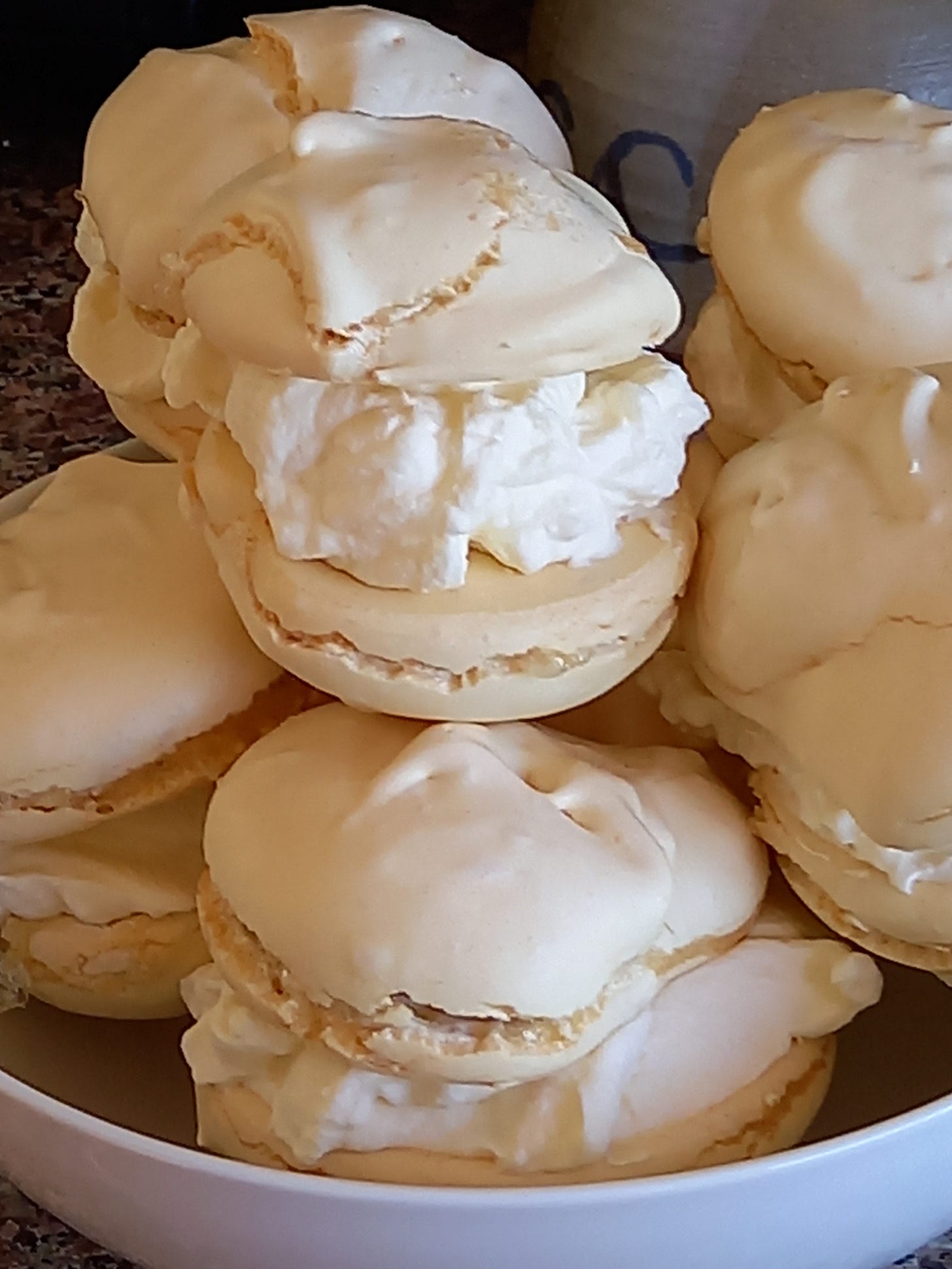
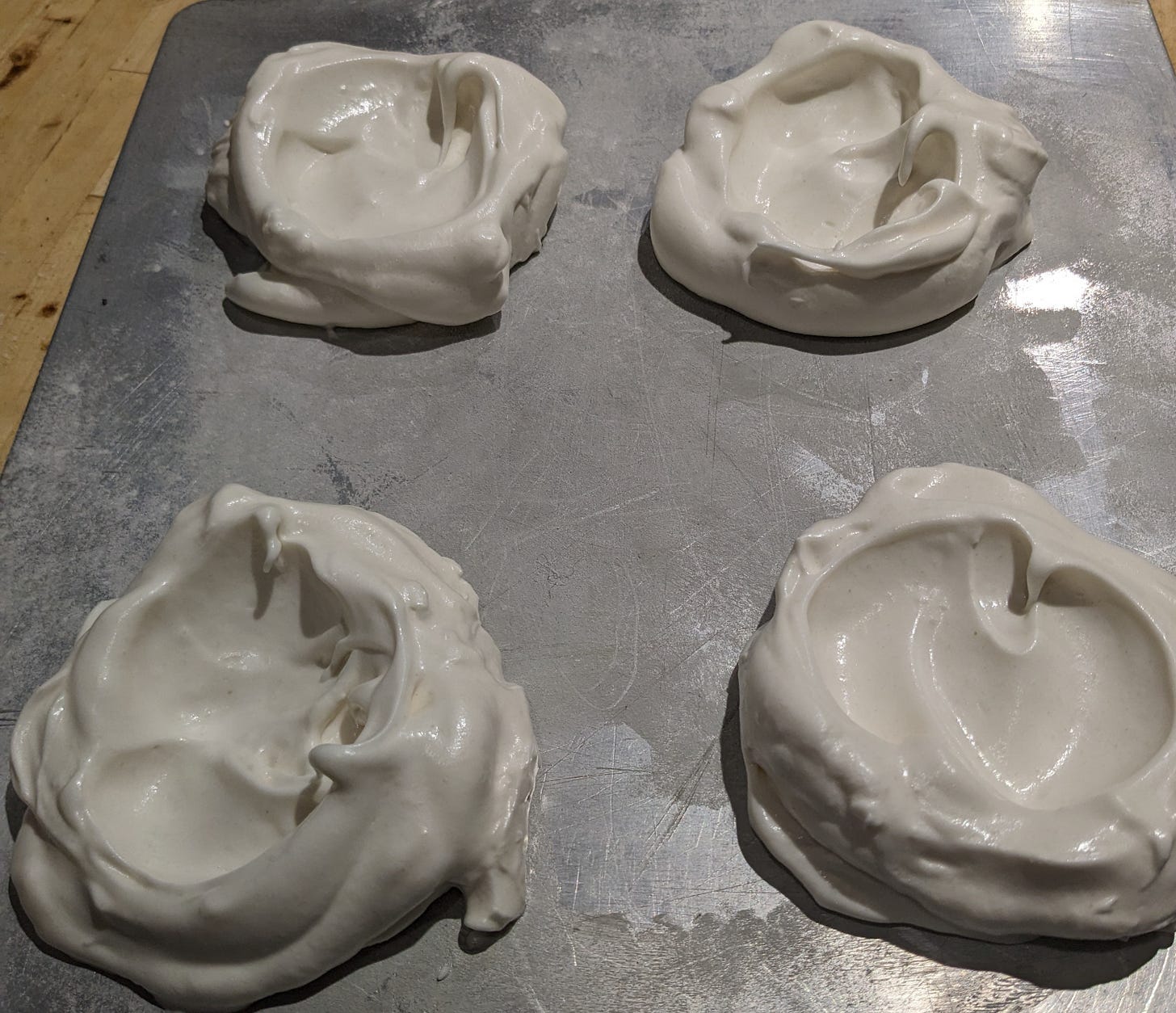
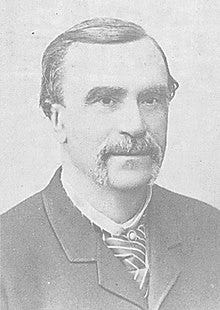
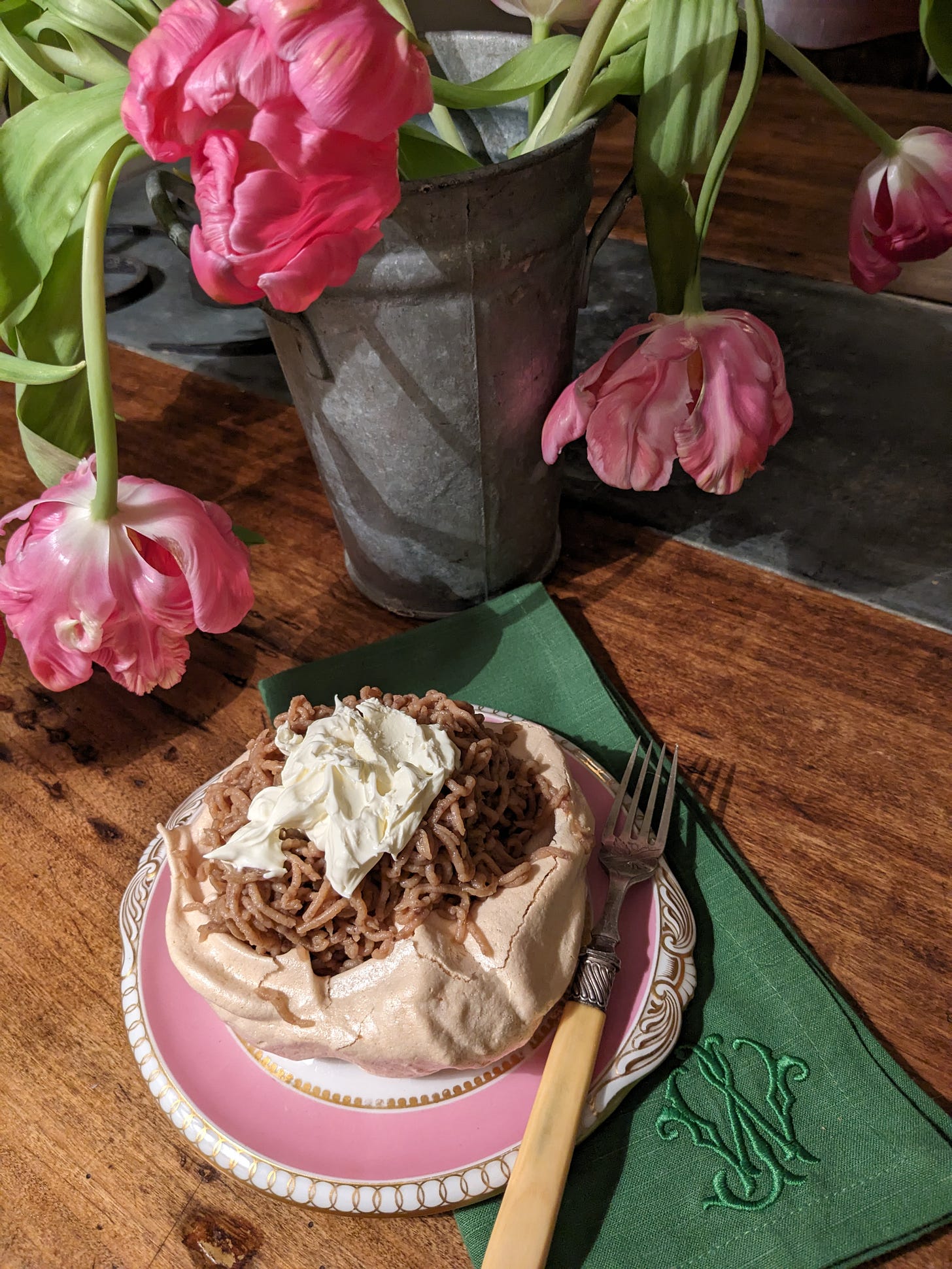
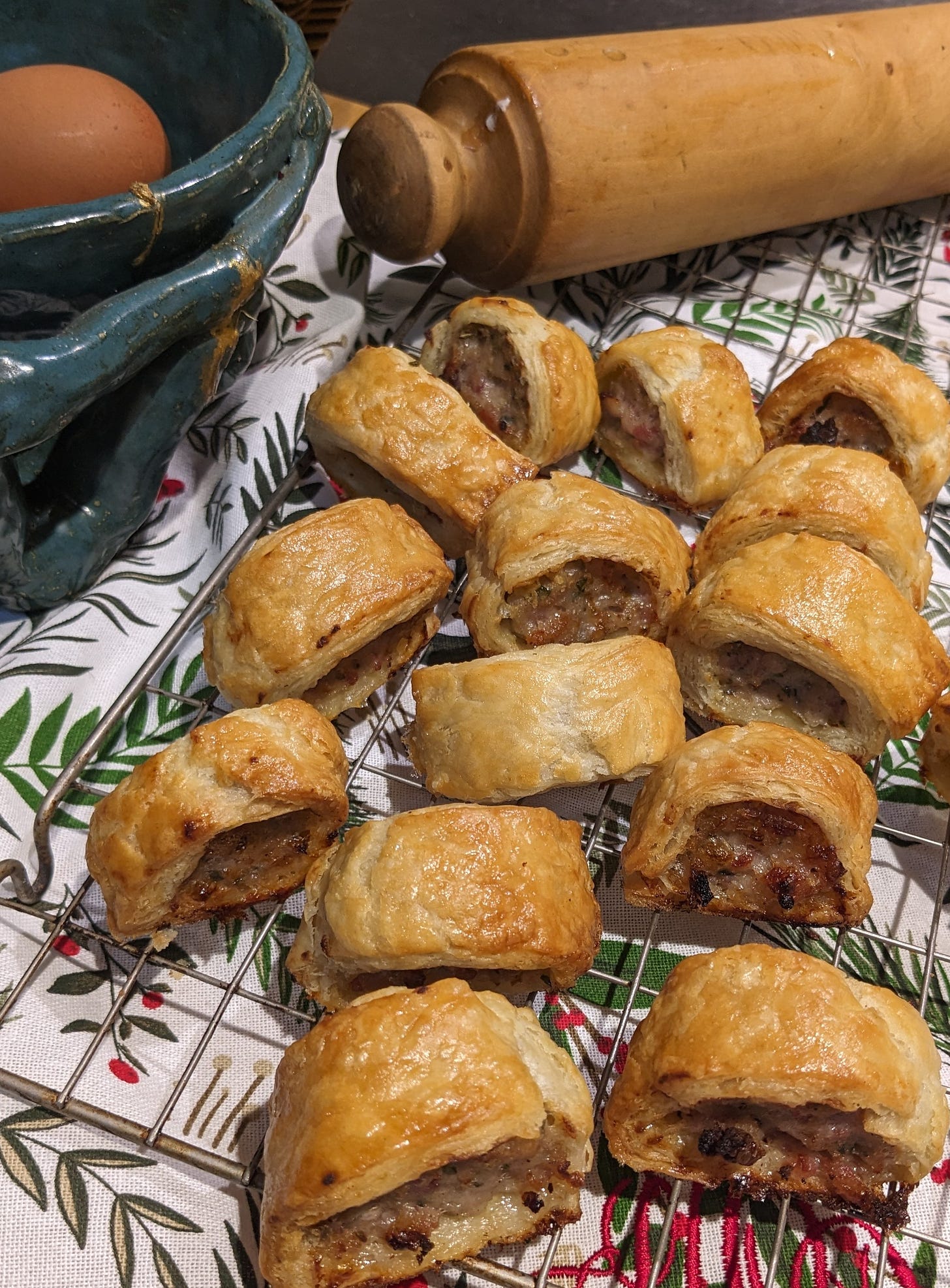
My husband would love these dessert recipes. Your historical references were, as always, both informative & amusing. I hope you have a wonderful Christmas with your loved ones.
Deliciously informative as always! I have three lunches this year - duck for Christmas Day by myself, goose for when the family pays their Christmas visit, and ending with a Twelfth Night Feast! I'm giving serious consideration to adding your Mont Blanc to the selection of desserts for the last one (trifle, tarte tatin, homemade ginger ice-cream). I tend to get a bit carried away ...
Wonderful to find someone who actually knows the difference between mantel and mantle!
Hope you all have a wonderfully happy Christmas, and may 2024 be kind to you